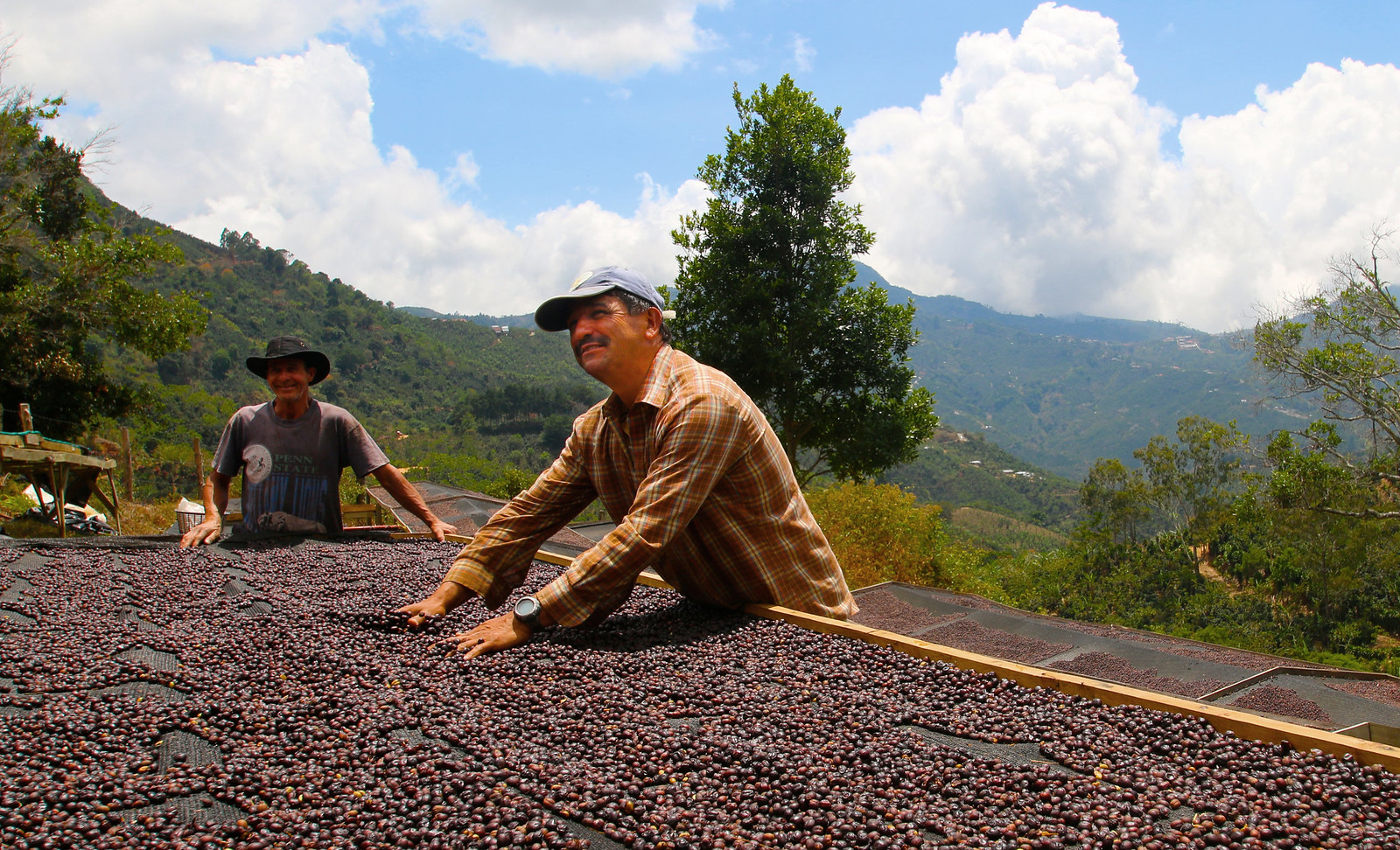Helena Coffee Vietnam@Gia Vị
3 năm trước
What Is Dry Processing? Dry Coffee Processing Method
Dry processing is one of the simplest and oldest coffee processing methods in the history of the coffee industry, often applied in processing Robusta coffee. The essence of this method is to dry the coffee under the sun or a drying device to reduce the moisture content of the coffee to 10 -12%.
There are a number of reasons why dry-processed coffee is so popular, although drying (for the most part) produces only a decent quality coffee. In return, this process uses less water and energy. it also requires less infrastructure.
Natural processing (often referred to as “Natural processing” or “Dry process” ) is the most basic technique for processing coffee after harvest, but it is also one of the most difficult ways to produce good coffee.
Dry processing has always been a simple, inexpensive method of cooking: all you need is sunlight and a flat surface. After the coffees are harvested, they are sun-dried until the humidity drops to 11-12%, a process that can take 30 days (weather permitting). There are several different methods for drying coffee: some farmers use raised beds, others dry the coffee in the yard, and others combine drying with a mechanical dryer. Regardless of these variations, however, the natural drying process does not require any fancy equipment.

Natural processing may be one of the oldest techniques, but only in the last few years has it been able to enter the specialty coffee market . Naturally processed coffee is most commonly found in Ethiopia, Yemen, Brazil and Costa Rica, although producers around the world are experimenting with this method as well.
While wet-processed coffee has its pods removed relatively quickly after harvest, dry-processed coffee does the opposite. Specifically, coffee cherries are picked when ripe and left to dry completely before peeling (peeling). While historically this peeling was done by hand with a mortar and pestle, today it is done with machines that can be more finely calibrated.

The first key to dry processing is paying attention to the harvest, making sure you pick it at the best time – and that's when it's ripe. Another important step is to sort the coffee at different ripening stages. If unripe or overripe berries are dried together it can seriously affect the taste of the final product (according to perfectdailygrind ).
As with all coffee preparation, fermentation occurs in every step of the process, from the moment the coffee is picked. The populations of yeasts and bacteria that are available on the surface of the fruit (or have entered the fruit due to mechanical action during collection and transportation) will metabolize the sugars and acids inside the coffee fruit immediately, in the process. Fermentation can continue until the coffee is dried to the standard 11% moisture content.
Although the coffee is not kept in the "fermentation tank" and is controlled like wet processing. But its fermentation in dry processing can be altered by many things such as ambient temperature, duration of sun exposure, shade density, fruit density in drying beds, and raking. island – rotation of coffee during drying, etc.

The whole drying process is completely dependent on weather conditions, i.e. sunshine, it can last for about 1-3 weeks. During this time, you must regularly rake the island several times a day so that the layer of fruit dries evenly, limiting mold growth. At night, the coffee must be piled up, and covered with canvas to avoid night dew. If the coffee layer is spread unevenly or spread too thickly, the coffee fruit may be fermented by the enzyme system in the fruit, causing the coffee to have an unpleasant taste.
After three to five days of drying, the coffee will start to feel like rubber – as the pods lose water, the coffee can be furrowed 5-6 inches thick to expand the space. And after about a week from the start, you will begin to evaluate & decide when to end the drying process.
When the skins shrivel, dry up, and almost turn black, the drying process ends to move to the close-to-the-shell stitch. The end of the drying process is a decisive factor for dry processing. Coffee cherries that are not dry enough will be susceptible to degradation (mold) by bacteria and mold. Meanwhile, coffee that is too dry (overdried) will become brittle and create a lot of debris during grinding (the coffee bean can also break) while grinding.

It is important to dry the coffee to a moisture content of less than 11% (or 10-12%) and for this, a good temperature is required; Therefore, dry processing is usually done outdoors with ambient temperatures around 29-31°C. (see also an overview of the coffee drying process ). Finally, after reaching the required humidity, the coffee can be collected, packaged, and stored in a cool and dry place until the buyer is ready to receive the goods.
Specialty Coffee makers generally stay away from dry processing. They know that temperature and humidity, which are unreliable and difficult to predict, will have a big impact on the quality of coffee beans. As a result, dry processed coffee often comes from producers with little commitment to quality, where there is a lack of resources to invest in post-harvest infrastructure or areas where water is scarce during the harvest period. planning (especially Ethiopia, Indonesia, Yemen, and Brazil).

- See also the Effect of processing on sugar content in coffee beans. You'll find that the dry treatment produces a variety of fruit flavors, not just bitter or sour. When this process is done well, it gives outstanding sweetness and a rich texture.
However, there are many reasons why dry processed coffee has become more popular. When applied science and controlled fermentation are, the taste of natural processing will improve significantly. It uses less water and energy. It also requires less infrastructure. In other words, dry processing is good quality, eco-friendly and cheap – a great trio, if you have the right climate.
----------------------------
Hợp Tác Cùng YBOX.VN Truyền Thông Miễn Phí - Trả Phí Theo Yêu Cầu tại http://bit.ly/YBOX-Partnership
39 lượt xem
.jpg)
